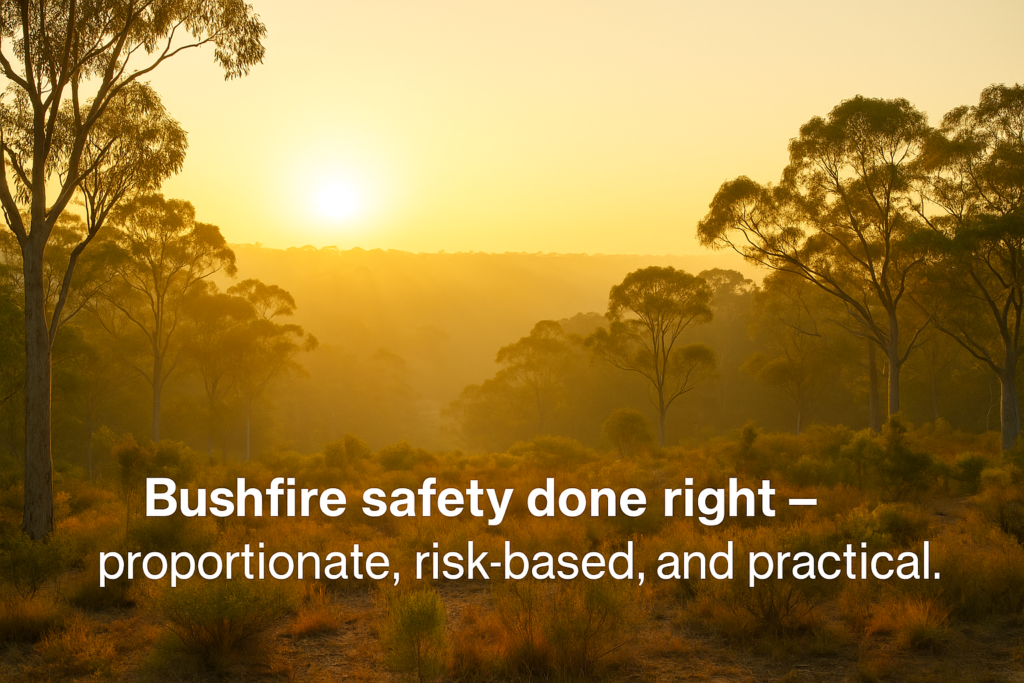By Lew Short, Director Blackash Bushfire Consulting
In New South Wales, Planning for Bush Fire Protection 2019 (PBP) sets the benchmark for how we plan, design and assess new development in bushfire-prone areas. Its aim is clear and simple, yet profoundly important:
To provide for the protection of human life and minimise impacts on property from the threat of bush fire, while having due regard to development potential, site characteristics and protection of the environment.
At its core, PBP is not just a bushfire safety guideline; it’s a balancing framework. It recognises that protecting life and property is essential, but that this must be achieved in a way that still allows for sustainable development, economic growth, and environmental stewardship.

One of the most misunderstood parts of PBP’s aim is its explicit reference to “development potential”. This phrase acknowledges that land use planning must balance bushfire safety with the reasonable expectations of landowners and communities in a way that provides viable and thriving communities. Of course, there are types of use where the risk is too high and compromise is required. Proposals must balance the development potential with the requirement to protect life and property without needless impact on our environment or unnecessary impact on yield and cost. It is like threading a needle.
Bushfire consultants, planners, and regulators, all share a common responsibility to interpret PBP in the spirit it was written. That means balancing safety, practicality, development potential and environmental responsibility.
When we apply PBP as a tool for balance, not as a blunt instrument of compliance, we achieve its true purpose: protecting people and place together.
At Blackash, we believe that resilience is built on proportionate and practical solutions not extremes. PBP provides the framework; it’s up to us to apply it with fairness, insight, and respect for both people and the landscape.
Put simply, “development potential” is PBP’s safeguard against overreach and unbalanced conservatism. It reminds practitioners and regulators that bushfire safety is not achieved by preventing development but by designing for coexistence. A proportionate approach respects bushfire safety requirements with a risk based and proportionate consideration and response to bushfire risk.
The smart operators, the planners, the fire engineers, the bushfire consultants know this isn’t about compromise. It’s about precision. The right use, the right design in the right place, delivering the right level of safety.
Ultimately, the phrase “development potential” grounds PBP in practicality. It says that safety, sustainability, and opportunity can coexist, that resilience isn’t built through restriction, but through design that respects both the site specific characteristics and the people who inhabit it.
That’s the balance point. That’s the art behind PBP. And like any good plan, when it’s done well, it looks effortless, because all the hard thinking happened long before the fire reached the horizon. That’s the essence of proportionality, risk managed with intelligence, not repetition.
At Blackash, we specialise in risk-based, proportionate bushfire solutions that respect both the intent and the balance of PBP 2019. Our approach integrates safety, development opportunity, and environmental stewardship because resilience is achieved through design that works.







